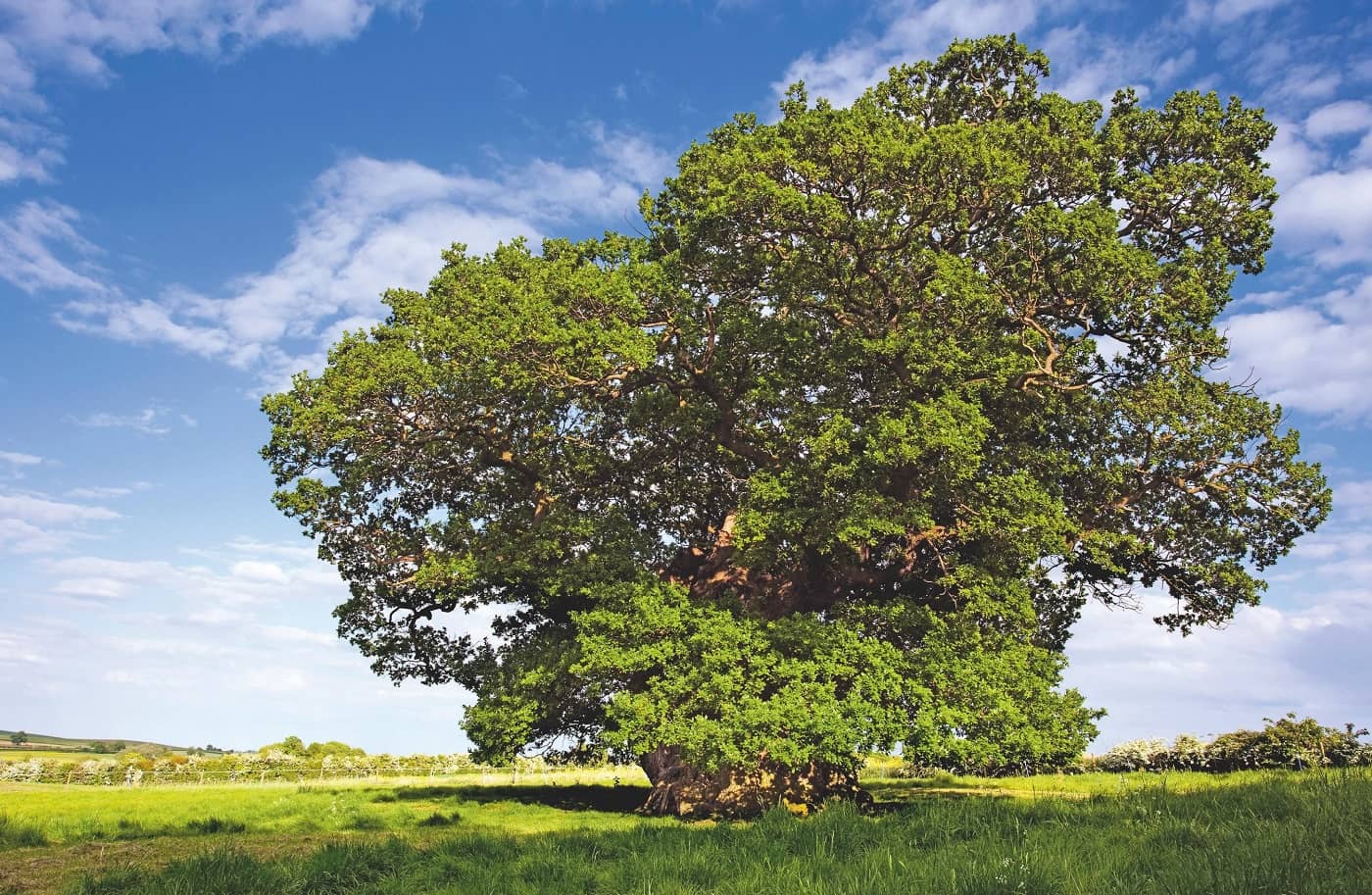For tree-loving landowners who want to leave their mark, nothing beats planting your own quercetum. Mark Griffiths celebrates the mighty oak and its determined collectors

GLANUSK is the Welsh seat of that noblest of trees, the oak. In spring and summer, the wilder parts of this glorious Powys estate are garlanded with coppery red and golden-green as our native Quercus robur and Q. petraea burst into growth.
Gracing its more frequented areas are specimens that celebrate royal visits, the oldest of which is an exotic Turkey oak (Q. cerris) planted by the Duke of Clarence in the 1880s. This tradition has flourished under Dame Shân Legge-Bourke, who inherited the estate from her father, the 3rd Baron Glanusk. It was crowned in 2012, when The Queen planted a fine example of Q. robur, Britain’s greatest tree and the tree that made Britain great.
Now, a new oak has joined this royal company: Q. rubra Magic Fire. A remarkable cultivar of a North American species, it’s distinguished by its manageable size, red twigs and leaves that resemble the Corinthian order’s acanthus motif in shape and progress in colour from chartreuse in spring to butter and honey in autumn. It was planted on July 4 this year by The Prince of Wales to mark the official opening of the Glanusk Quercetum, one of Britain’s largest collections of Quercus species and cultivars.
The quercetum owes its existence to Dame Shân’s late husband, William (‘Bill’) Legge-Bourke. He liked to collect acorn inspired artefacts until 1981, when he fell for the product of the real thing, a young oak given to him by Lord Fairhaven. Thereafter, he made time for oak hunting on the trips abroad demanded by his career in finance.
At Glanusk, he sprouted any acorns gathered on these forays and tended the results. He began to dream of creating a living museum of the world’s oaks, a landscape in which visitors would be captivated, as he had been, by the beauty, botany and ecological significance of these most exalted of trees. He took early retirement to pursue this vision.
この記事は Country Life UK の August 21, 2019 版に掲載されています。
7 日間の Magzter GOLD 無料トライアルを開始して、何千もの厳選されたプレミアム ストーリー、9,000 以上の雑誌や新聞にアクセスしてください。
すでに購読者です ? サインイン
この記事は Country Life UK の August 21, 2019 版に掲載されています。
7 日間の Magzter GOLD 無料トライアルを開始して、何千もの厳選されたプレミアム ストーリー、9,000 以上の雑誌や新聞にアクセスしてください。
すでに購読者です? サインイン

Give it some stick
Galloping through the imagination, competitive hobby-horsing is a gymnastic sport on the rise in Britain, discovers Sybilla Hart

Paper escapes
Steven King selects his best travel books of 2024

For love, not money
This year may have marked the end of brag-art’, bought merely to show off one’s wealth. It’s time for a return to looking for connoisseurship, beauty and taste

Mary I: more bruised than bloody
Cast as a sanguinary tyrant, our first Queen Regnant may not deserve her brutal reputation, believes Geoffrey Munn

A love supreme
Art brought together 19th-century Norwich couple Joseph and Emily Stannard, who shared a passion for painting, but their destiny would be dramatically different

Private views
One of the best ways-often the only way-to visit the finest privately owned gardens in the country is by joining an exclusive tour. Non Morris does exactly that

Shhhhhh...
THERE is great delight to be had poring over the front pages of COUNTRY LIFE each week, dreaming of what life would be like in a Scottish castle (so reasonably priced, but do bear in mind the midges) or a townhouse in London’s Eaton Square (worth a king’s ransom, but, oh dear, the traffic) or perhaps that cottage in the Cotswolds (if you don’t mind standing next to Hollywood A-listers in the queue at Daylesford). The estate agent’s particulars will give you details of acreage, proximity to schools and railway stations, but never—no, never—an indication of noise levels.

Mission impossible
Rubble and ruin were all that remained of the early-19th-century Villa Frere and its gardens, planted by the English diplomat John Hookham Frere, until a group of dedicated volunteers came to its rescue. Josephine Tyndale-Biscoe tells the story

When a perfect storm hits
Weather, wars, elections and financial uncertainty all conspired against high-end house sales this year, but there were still some spectacular deals

Give the dog a bone
Man's best friend still needs to eat like its Lupus forebears, believes Jonathan Self, when it's not guarding food, greeting us or destroying our upholstery, of course